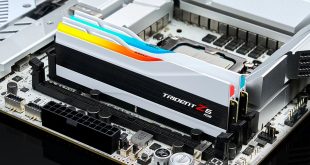Anyone out there with a Digital SLR camera will know that the better the camera and higher the image quality, the bigger the file. While smartphones are snapping JPGs in the 1-2 megabyte range, modern camera files can be significantly larger. KitGuru gets its hands on a low cost device from Kingston that can actually make a camera-user's world a better place.
Depending on the compression used, DSLR cameras that cost around £500 will fill your SD card with JPGs at around 5MB a click. Shoot for an afternoon and you might end up with 1,000 shots and a feeling of great artistic contentment.
But, at some stage, you will start to wonder about your clever mates and the RAW format that they keep banging on about. In simple terms, a JPG is a compressed image – whereas capturing a RAW file means storing all of the readings from all of the sensor points inside your camera when the shot was taken. It's a much larger file – and can typically be around 30MB.
When you return to your PC and begin the process of moving something like 25GB of data at standard speeds, the idea of ‘something significantly faster' for around £6 seems downright appealing.
How much of a difference you see will depend on how you normally transfer files from your DSLR to your computer. Some will connect the camera directly, others put the SD card into a specific slot designed for the job, and some of you will already be putting their SD card into an older USB 2 card reader.
Whatever method you use, next time you're moving a load of data around – have a look at this shot of the Kingston USB 3 card reader in action and see if you'd prefer to see this kind of data transfer speed number on your screen.

KitGuru says: From the time we bought one to the time when this article went live, the drive had moved from £5.99 to £6.71 on Amazon, which we take as an indicator of its popularity. When it launched, the price was closer to $20 (£13), which isn't bad – but it's not the bargain it appears to be now.
Comment below or in the KitGuru forums.
 KitGuru KitGuru.net – Tech News | Hardware News | Hardware Reviews | IOS | Mobile | Gaming | Graphics Cards
KitGuru KitGuru.net – Tech News | Hardware News | Hardware Reviews | IOS | Mobile | Gaming | Graphics Cards


